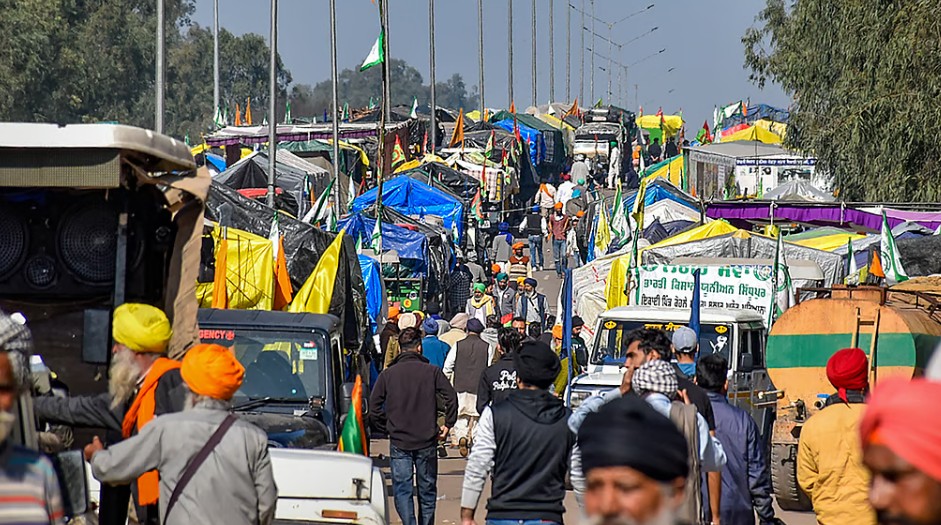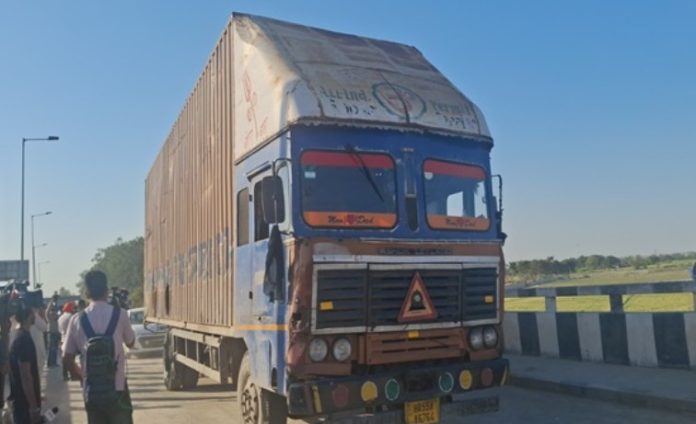After days of roadblocks and heavy restrictions at the Shambhu border between Punjab and Haryana, authorities have finally decided to open one side of the road for light vehicles. This move comes after intense negotiations and growing concerns over the impact of the road closure on commuters, local businesses, and transportation networks. The reopening of the route signals a partial relaxation of restrictions, though tensions remain high in the region due to the ongoing farmer protests and security measures implemented by the state administrations.
The Shambhu border has been a focal point of protests, with farmers staging demonstrations and blocking key roads to press for their demands. The agitation, primarily driven by Punjab’s farming community, has led to significant disruptions in the movement of people and goods between the two states. As a result, long queues of vehicles, stranded passengers, and delayed supply chains have become a common sight over the past few days. Businesses that rely on smooth transportation across the Punjab-Haryana border have suffered substantial losses due to the restrictions.
For many commuters and transporters, the decision to reopen one side of the Shambhu road for light vehicles has come as a relief. People who frequently travel between Punjab and Haryana for work, medical treatment, education, and trade have been struggling with alternative routes that are often longer and more congested. With the partial reopening, the authorities aim to ease at least some of the challenges faced by these travelers. However, heavy vehicles, including trucks and buses, are still being restricted from using the route, as the government remains cautious about maintaining control over the situation.
The protests at the Shambhu border began as part of a larger movement by farmers demanding their rights, including the implementation of Minimum Support Price (MSP) guarantees and other policy changes that would benefit the agricultural sector. Over time, the demonstrations intensified, leading to an increased presence of security personnel and barricades at major entry points. The government, concerned about possible escalation, took strict measures to prevent large-scale gatherings from disrupting public order. These measures included road closures, detentions of protest leaders, and restrictions on movement across state borders.

The decision to reopen one side of the road came after multiple discussions between officials from Punjab and Haryana. Both states have been working on finding ways to manage the crisis without allowing it to spiral out of control. Punjab’s government, while sympathetic to the farmers’ cause, has also been under pressure to ensure that normal life is not completely paralyzed. Haryana, on the other hand, has been focusing on law enforcement, preventing protesters from marching toward Delhi, and maintaining security across its border areas.
Even as the road has been partially opened, security forces continue to remain on high alert. Barricades, checkpoints, and police personnel are still stationed at key points to prevent any sudden escalation. Authorities have emphasized that the relaxation is temporary and that any signs of renewed agitation could lead to a reversal of the decision. The government has also urged protesters to adopt peaceful methods of demonstration and to cooperate with law enforcement agencies to avoid unnecessary confrontations.
For local businesses operating near the Shambhu border, the past few days have been particularly challenging. Many shop owners and service providers who rely on the steady flow of customers from both Punjab and Haryana have reported significant losses due to the roadblock. With the partial reopening, they hope to see some recovery, though uncertainties still loom large. Transporters who have been facing difficulties in moving goods across states are also hopeful that this step will eventually lead to a full reopening of the route.
Farmers, however, remain determined to continue their protest until their demands are met. Many of them believe that while reopening the road may ease travel issues, it does not address the core concerns that led to the agitation in the first place. Protest leaders have reiterated that their fight is not just about roadblocks but about securing a future for Punjab’s agrarian economy. They argue that temporary measures like this do not resolve the fundamental policy issues affecting farmers.
Political reactions to the decision have been mixed. Some leaders from opposition parties have welcomed the move, arguing that it was long overdue and necessary for the public. Others have criticized it, saying that the government should focus on addressing the root causes of the protests rather than merely managing the symptoms. Several farmer organizations have also expressed skepticism, viewing the reopening as a tactical move to weaken their movement rather than a genuine attempt at resolution.
Despite the reopening of one side of the road, challenges remain. Heavy congestion is expected as vehicles try to pass through the partially restored route. Law enforcement agencies are also keeping a close watch on any potential flashpoints where tensions could rise again. The government has appealed for patience from both commuters and protesters, urging them to allow discussions to take their course.
Looking ahead, the situation at the Shambhu border remains fluid. While the reopening is a step toward normalcy, the broader issues of farmer grievances, government policy, and security concerns still need to be addressed. The coming days will be crucial in determining whether this partial relaxation will lead to further easing of restrictions or if tensions will escalate again, prompting the government to tighten its grip once more.
For now, commuters and local businesses can breathe a sigh of relief as at least some movement has been restored. However, with the larger protest movement still active, it remains uncertain how long this relaxation will last and whether a more comprehensive solution to the farmers’ demands will be reached.


